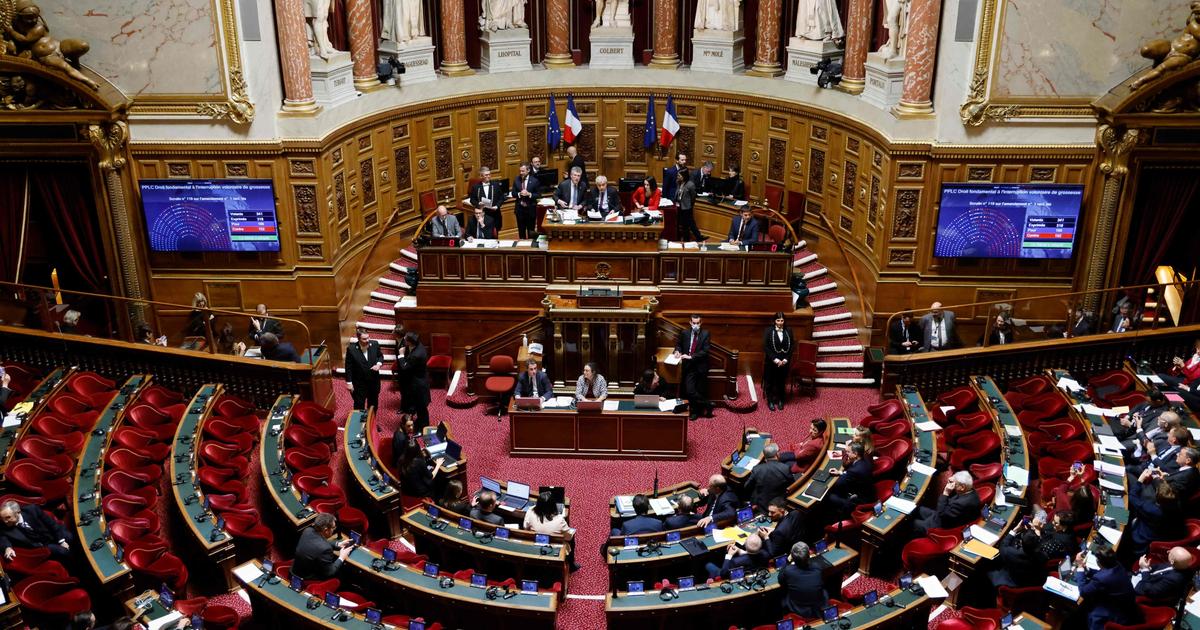Will the senators attack their own pension plan?
While the reform proposed by the government arrived this week in the upper house, some elected officials are calling for this issue to be addressed.
Ecologists have thus tabled a motion for a resolution pleading for a reform of "
the pension fund of former senators for more exemplary and transparency
".
The left-wing senators thus suggest “initiating
a reflection
”, citing the example of the National Assembly which has “
aligned its pension scheme with the common law of the public service since January 1, 2018
”.
For the time being, the text of the executive provides for the abolition of certain special loss-making schemes such as that of the RATP or the Banque de France.
But for the President of the Senate, Gérard Larcher, the Senate system should not be housed in the same boat, it being "
autonomous
" and self-financed.
Le Figaro
takes stock.
Today, the pension plan for senators is managed by the Senate itself.
Concretely, according to the accounts of the Senate, 38 million euros were paid to former senators in 2021. Of this sum, 33% is financed by contributions from senators, and 67% by "financial assets which have been
constituted in order to consolidate the medium and long-term balance of the regime
”, indicates the Senate website.
These assets do not come from the taxes of the French but from “
the surplus of contributions constituted since the creation of the plan in 1905
”, explains to
Figaro
the press service of the upper house.
"
The high amount of employee contributions, the small number of pensioners and their use over a short period of pension services
" explain the significant amount saved, we add.
Indeed, senators retire later than the average French person, and therefore have less recourse to their right to retirement than the average French person.
Well managed, this savings made it possible to balance the scheme and thus avoid having to resort to State subsidies: "
There is no balancing grant, no balancing subsidy, no financial transfer coming from outside
“, underlines the Senate.
Among the 33% of contributions, 21% are employer contributions, as is the case for any scheme where the State is the employer, and are therefore financed by the State.
This amount amounts to 8 million euros.
However, this does not fall under a subsidy to balance the books.
Read alsoPension reform: the Senate leaves its mark
Different from a deficit diet
The Senate system is therefore not a deficit fund.
By way of comparison, the RATP paid 1.2 billion euros in pensions in 2022, recalls the director general of the pension fund for the staff of the management, Christophe Rolin.
This amount is divided between “
500
million euros of contributions
” employer and employees, and “
780
million which are financed by the State subsidy, in 2022
”.
It is therefore around 65% of RATP pensions that are financed by French taxes, not counting the share of employer contributions also logically financed by the State.
Similarly, the Banque de France, in major demographic imbalance, has around 7,850 contributors in 2021, for 17,000 pensioners, according to a report by the National Assembly.
It also specifies that the institution “
paid 546
million euros to its pensioners in 2021, including 477
million from the employer’s contribution
[the State therefore, editor’s note]
to balance the scheme
”.
The Banque de France does not pay employers' contributions but directly receives a supplement to ensure the balance.
It is therefore nearly 90% of its retirement system that would be financed by taxes.
Retirement at age 72 on average
Conversely, the structure of the senatorial system is "
balanced
" with a positive balance which amounted, at the end of 2020, to around 625 million euros, according to the accounts.
What to envy.
Today, a senator who has served a term of 6 years is led to receive 2190 euros net pension per month.
By way of comparison, a member of the National Assembly, whose scheme is subsidized by the State, “
receives 684
euros net of pension after 5 years of mandate
according to the Palais Bourbon website.
In 2018, MPs aligned their pension scheme with that of the civil service.
An elected official can therefore receive his retirement from the age of 62 today, and 64 years old once the new pension reform has been passed.
This retirement is proportional to the time spent in the National Assembly, as for a civil servant.
For its part, the regime for senators has already changed several times, in 2003, 2010 and 2014 to achieve a similar retirement age of 62, which will increase to 64 once the reform is passed.
In practice, senators actually retire much later, "
at 72 years on average
", specifies the upper house.
In addition, left-wing elected officials want to “
prohibit fund reserves from being invested in fossil fuel projects
”.
It remains to be seen whether these various points will be validated by their colleagues.

